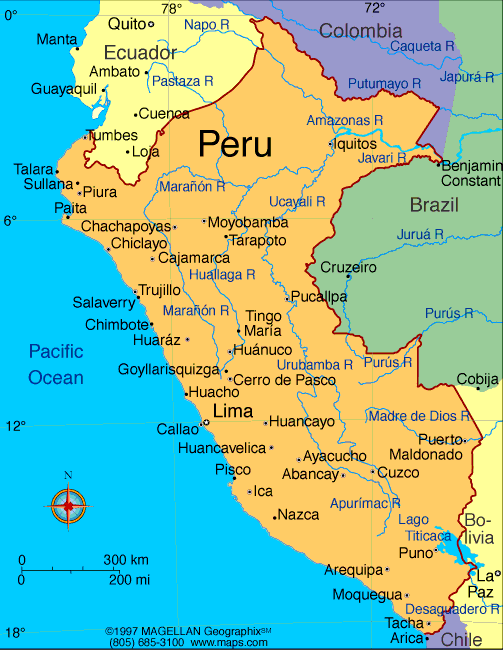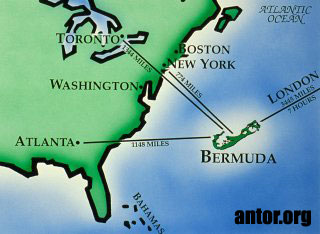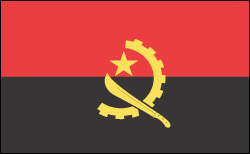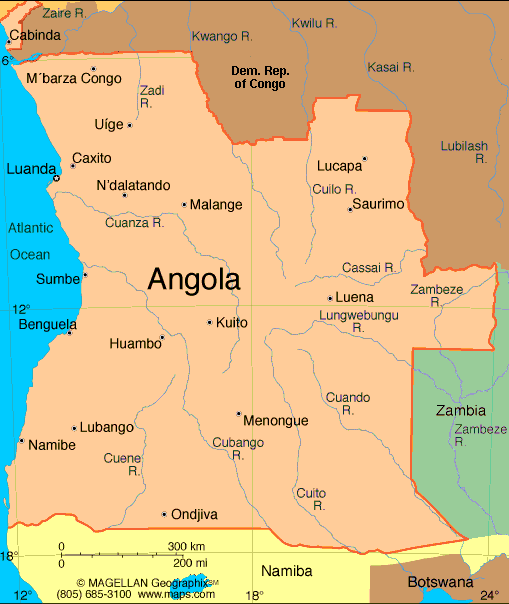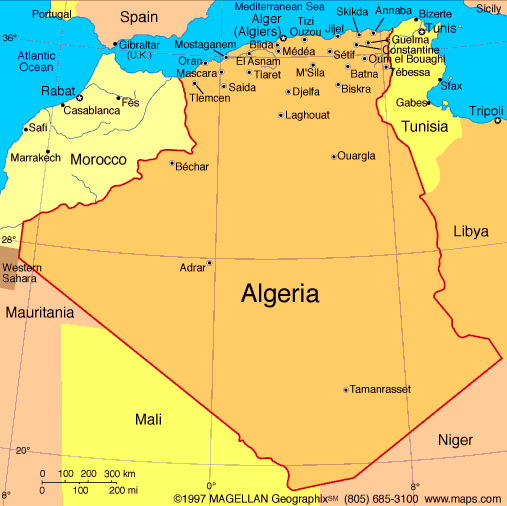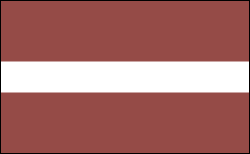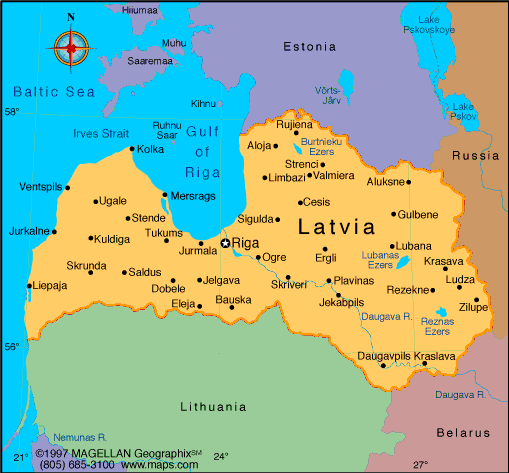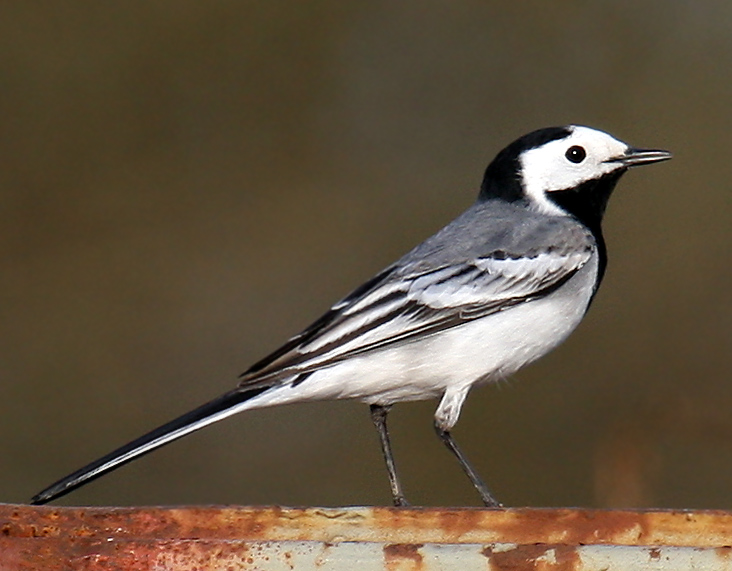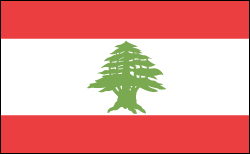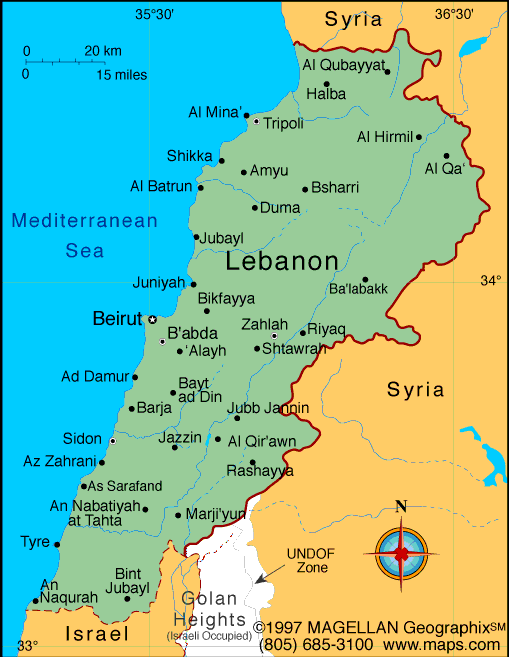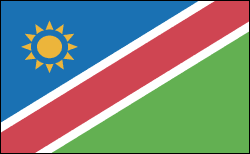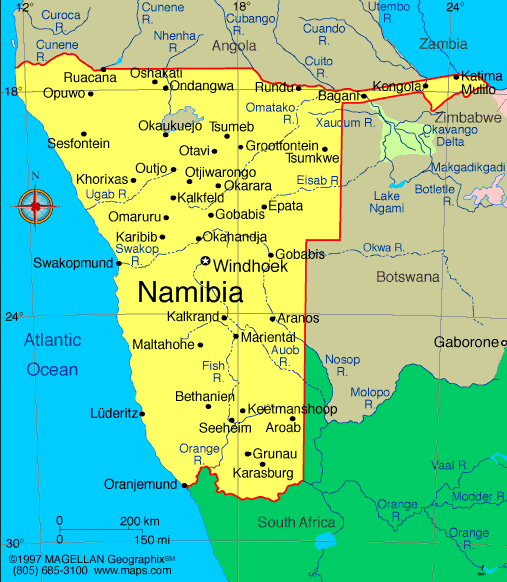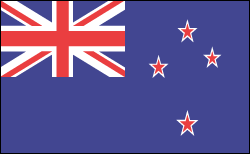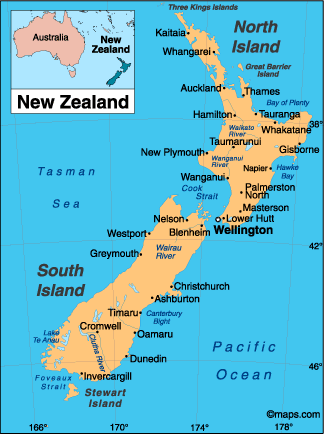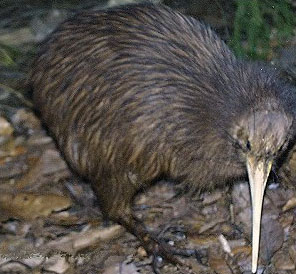- Total area: 27,750 km2
- Land area: 27,560 km2
- Comparative area: slightly larger than Maryland
- Land boundaries: Dominican Republic 275 km
- Coastline: 1,771 km
- Disputes: claims US-administered Navassa Island
- Climate: tropical; Average Summer Temperature (July) 30°C - 35°C: Average Winter Temperature (December) 20°C - 26°C: The rainy season is between May & November. Although Haiti’s climate is tropical in nature, some of the mountainous areas are semi-arid. This semi-arid climate is caused by both deforestation on the island and also by the high mountains cutting off the moist eastern trade winds.
- Terrain: mostly rough and mountainous
- Natural resources: bauxite
- Land use: arable land 20%; permanent crops 13%; meadows and pastures 18%; forest and woodland 4%; other 45%; includes irrigated 3%
- Environment: lies in the middle of the hurricane belt and subject to severe storms from June to October; occasional flooding and earthquakes; deforestation; soil erosion: Note: shares island of Hispaniola with Dominican Republic
- Haiti People Population: 6,431,977 (July 1992), growth rate 2.3% (1992)
- Birth rate: 42 births/1,000 population (1992)
- Death rate: 15 deaths/1,000 population (1992)
- Net migration rate: -5 migrants/1,000 population (1992)
- Infant mortality rate: 104 deaths/1,000 live births (1992)
- Life expectancy at birth: 53 years male, 55 years female (1992)
- Fertility rate: 6.2 children born/woman (1992)
- Nationality: Haitian Ethnic divisions: black 95%, mulatto and European 5%
- Religions: Roman Catholic is the official religion; Roman Catholic 80% (of which an overwhelming majority also practice Voodoo), Protestant 16% (Baptist 10%, Pentecostal 4%, Adventist 1%, other 1%), none 1%, other 3% (1982)
- Languages: French (official) spoken by only 10% of population; all speak Creole
- Literacy: 53% (male 59%, female 47%) age 15 and over can read and write (1990 est.)
- Labor force: 2,300,000; agriculture 66%, services 25%, industry 9%; shortage of skilled labor, unskilled labor abundant (1982)
- Organized labor: N/A
- Flag: two equal horizontal bands of blue (top) and red with a centered white rectangle bearing the coat of arms, which contains a palm tree flanked by flags and two cannons above a scroll bearing the motto L'UNION FAIT LA FORCE (Union Makes Strength)
- Economy Overview: About 75% of the population live in abject poverty. Agriculture is mainly small-scale subsistence farming and employs nearly three-fourths of the work force. The majority of the population does not have ready access to safe drinking water, adequate medical care, or sufficient food. Few social assistance programs exist, and the lack of employment opportunities remains one of the most critical problems facing the economy, along with soil erosion and political instability. Trade sanctions applied by the Organization of American States in response to the September 1991 coup against President Aristide have further damaged the economy.
- GDP: exchange rate conversion - $2.7 billion, per capita $440; real growth rate - 3.0% (1990 est.)
Wednesday, March 2, 2011
Haiti
Grenada
INFORMATION
• Full name: Grenada
• Capital City: Saint George's
• Language: English (official)
• Currency: Eastern Caribbean Dollar (EC$)
• Religion: Roman Catholic, Protestant and Baha'i
• National Anthem: Hail Grenada
• Newspaper: Grenada Today, The Grenadian Voice
• Places to Visit: Carriacou, St George's, Fort George, Grand Etang National Park, Grenada National Museum and many others.
• Transport: One can avail several charter flights from Grenada's Point Salines International Airport.Avail direct flight from US that flies via San Juan, Puerto Rico. One can use the trental car from this airport to the required destination. Yachts also provide a pleasurable journey within the region.
• Shopping: Leather crafts, jewelry, spices, straw goods and batik (printed fabrics)
Dove (national bird)
Tuesday, March 1, 2011
Peru
Western South America, bordering the South Pacific Ocean, between Chile and Ecuador
Geographic coordinates:
10 00 S, 76 00 W
Map references:
South America
Area:
total: 1,285,220 sq km
land: 1.28 million sq km
water: 5,220 sq km
Area - comparative:
slightly smaller than Alaska
Land boundaries:
total: 5,536 km
border countries: Bolivia 900 km, Brazil 1,560 km, Chile 160 km, Colombia 1,496 km (est.), Ecuador 1,420 km
Coastline:
2,414 km
Maritime claims:
territorial sea: 200 nm
continental shelf: 200 nm
Climate:
varies from tropical in east to dry desert in west; temperate to frigid in Andes
Terrain:
western coastal plain (costa), high and rugged Andes in center (sierra), eastern lowland jungle of Amazon Basin (selva)
Elevation extremes:
lowest point: Pacific Ocean 0 m
highest point: Nevado Huascaran 6,768 m
Natural resources:
copper, silver, gold, petroleum, timber, fish, iron ore, coal, phosphate, potash, hydropower, natural gas
Land use:
arable land: 2.89%
permanent crops: 0.4%
other: 96.71% (2001)
Irrigated land:
11,950 sq km (1998 est.)
Natural hazards:
earthquakes, tsunamis, flooding, landslides, mild volcanic activity
Environment - current issues:
deforestation (some the result of illegal logging); overgrazing of the slopes of the costa and sierra leading to soil erosion; desertification; air pollution in Lima; pollution of rivers and coastal waters from municipal and mining wastes
Environment - international agreements:
party to: Antarctic-Environmental Protocol, Antarctic-Marine Living Resources, Antarctic Treaty, Biodiversity, Climate Change, Climate Change-Kyoto Protocol, Desertification, Endangered Species, Hazardous Wastes, Marine Dumping, Ozone Layer Protection, Ship Pollution, Tropical Timber 83, Tropical Timber 94, Wetlands, Whaling
signed, but not ratified: none of the selected agreements
Geography - note:
shares control of Lago Titicaca, world's highest navigable lake, with Bolivia; a remote slope of Nevado Mismi, a 5,316 m peak, is the ultimate source of the Amazon River
Vicuna(national animal)
Croatia
Map
Geography
Croatia, or Republic of Croatia, a country in eastern Europe. Croatia lies in the northwest part of the Balkan Peninsula and includes all of the historic regions of Dalmatia and Slavonia, and most of the historic region of Istria. The total area is 21,830 square miles (56,538 km2). Croatia has a rocky coastline that gives way to hills and plains in the interior.
Manufacturing, agriculture, tourism, and timber production are mainstays of the economy. Croatia's leading manufacturing center is Zagreb. An important producer of cement and steel, other major products of Croatia include chemicals, petroleum, ships, and textiles. Bauxite and coal are its most valuable mineral resources.
Croatia has trade relations mainly with Austria, Germany, and Italy. Tourism also makes an important contribution to Croatia’s economy. Tourists come chiefly from the United Kingdom and also from Austria, Germany, and Italy. The most famous tourist sites are the resorts along the Adriatic coast and on the islands of Brac, Hvar, and Krk. Another tourist attraction is the historic walled city of Dubrovnik.
The chief crops grown in Croatia are corn, potatoes, soybeans, sugar beets, tobacco, and wheat. Fruits such as apples, cherries, grapes, olives, pears, and plums are among the other crops grown. Cattle, pigs, poultry, and sheep are also raised by farmers.
Dalmatian(national animal)
Iris
Monday, February 28, 2011
Bermuda
Map of Bermuda
Geography Bermuda
Location:
North America, group of islands in the North Atlantic Ocean, east of South Carolina (US)
Geographic coordinates:
32 20 N, 64 45 W
Map references:
North America
Area:
total: 53.3 sq km
land: 53.3 sq km
water: 0 sq km
Area - comparative:
about one-third the size of Washington, DC
Land boundaries:
0 km
Coastline:
103 km
Maritime claims:
territorial sea: 12 nm
exclusive fishing zone: 200 nm
Climate:
subtropical; mild, humid; gales, strong winds common in winter
Terrain:
low hills separated by fertile depressions
Elevation extremes:
lowest point: Atlantic Ocean 0 m
highest point: Town Hill 76 m
Natural resources:
limestone, pleasant climate fostering tourism
Land use:
arable land: 20%
permanent crops: 0%
other: 80% (55% developed, 45% rural/open space) (2001)
national animal(Humpback whale)
Angola
Map of Angola
Geography
Angola, more than three times the size of California, extends for more than 1,000 mi (1,609 km) along the South Atlantic in southwest Africa. The Democratic Republic of the Congo and the Republic of Congo are to the north and east, Zambia is to the east, and Namibia is to the south. A plateau averaging 6,000 ft (1,829 m) above sea level rises abruptly from the coastal lowlands. Nearly all the land is desert or savanna, with hardwood forests in the northeast.
National animal(Magnificent Frigatebird)
Sunday, February 27, 2011
Algeria
Map of Algeria
Geography
Nearly four times the size of Texas, Algeria is bordered on the west by Morocco and Western Sahara and on the east by Tunisia and Libya. The Mediterranean Sea is to the north, and to the south are Mauritania, Mali, and Niger. The Saharan region, which is 85% of the country, is almost completely uninhabited. The highest point is Mount Tahat in the Sahara, which rises 9,850 ft (3,000 m).
(national animal) Fennec Fox
Saturday, February 26, 2011
Latvia
Map of Latvia
Geography
Latvia borders Estonia in the north, Lithuania in the south, the Baltic Sea with the Gulf of Riga in the west, Russia in the east, and Belarus in the southeast. Latvia is largely a fertile lowland with numerous lakes and hills to the east.
Wagtail(national animal)
Lebanon
Map of Lebanon
Geography
Lebanon lies at the eastern end of the Mediterranean Sea, north of Israel and west of Syria. It is four-fifths the size of Connecticut. The Lebanon Mountains, which run parallel to the western coast, cover most of the country, while on the eastern border is the Anti-Lebanon range. Between the two lies the Bekaa Valley, the principal agricultural area.
Striped Hyena(national animal)
Lebanon
Wednesday, February 23, 2011
Namibia
Map of Namibia
Geography
Namibia is bordered on the north by Angola and Zambia, on the east by Botswana, and on the east and south by South Africa. It is for the most part a portion of the high plateau of southern Africa, with a general elevation of from 3,000 to 4,000 ft.
Oryx(national animal)
New Zealand
Map of New Zealand
Geography
New Zealand, about 1,250 mi (2,012 km) southeast of Australia, consists of two main islands and a number of smaller outlying islands so scattered that they range from the tropical to the antarctic. The country is the size of Colorado. New Zealand's two main components are the North Island and the South Island, separated by Cook Strait. The North Island (44,281 sq mi; 115,777 sq km) is 515 mi (829 km) long and volcanic in its south-central part. This area contains many hot springs and beautiful geysers. South Island (58,093 sq mi; 151,215 sq km) has the Southern Alps along its west coast, with Mount Cook (12,316 ft; 3754 m) the highest point. Other inhabited islands include Stewart Island, the Chatham Islands, and Great Barrier Island. The largest of the uninhabited outlying islands are the Auckland Islands (234 sq mi; 606 sq km), Campbell Island (44 sq mi; 114 sq km), the Antipodes Islands (24 sq mi; 62 sq km), and the Kermadec Islands (13 sq mi; 34 sq km).
Kiwi(national animal)
Tuesday, February 22, 2011
Kuwait
Jorden
Geography
The Middle East kingdom of Jordan is bordered on the west by Israel and the Dead Sea, on the north by Syria, on the east by Iraq, and on the south by Saudi Arabia. It is comparable in size to Indiana. Arid hills and mountains make up most of the country. The southern section of the Jordan River flows through the country.Oryx(national animal)
Oryx is one of four large antelope species of the genus Oryx. Three of the species are native to arid parts of Africa, with a fourth native to the Arabian Peninsula. Their pelage is pale with contrasing dark markings in the face and on the legs, and their long horns are almost straight. The exception is the Scimitar Oryx, which lacks dark markings on the legs, only has faint dark markings on the head, has an ochre neck, and horns that are clearly decurved.
The Arabian Oryx was only saved from extinction through a captive breeding program,[1] and the Scimitar Oryx, which probably now is extinct in the wild, also relies on a captive breeding program for its survival.[2] Small populations of several oryx species, such as the Scimitar Oryx, exist in Texas and New Mexico (USA) in wild game ranches. Gemsboks were released at the White Sands Missile Range and have become an invasive species of concern at the adjacent White Sands National Monument.
Sunday, February 20, 2011
Moldova
Geography
Moldova (formerly Moldavia) is a landlocked republic of hilly plains lying east of the Carpathian Mountains between the Prut and Dniester (Dnestr) rivers. The country is sandwiched between Romania and Ukraine. The region is very fertile, with rich black soil (chernozem) covering three-quarters of the territory.Aurochs(national animal)
he aurochs or urus (Bos primigenius), the ancestor of domestic cattle, was a type of huge wild cattle which inhabited Europe, Asia and North Africa, but is now extinct; it survived in Europe until 1627. The aurochs was far larger than most modern domestic cattle with a shoulder height of 2 metres (6.6 ft) and weighing 1,000 kilograms (2,200 lb). The aurochs was regarded as a challenging quarry animal, contributing to its extinction. The last recorded aurochs, a female, died in 1627 in the Jaktorów Forest, Poland, and her skull is now the property of Livrustkammaren in Stockholm.Malta
Map of MALTA
Geography
The five Maltese islands—Malta, Gozo, Comino, Comminotto, and Filflawith—have a combined land area smaller than Philadelphia. Malta is located in the Mediterranean Sea, about 60 mi (97 km) south of the southeast tip of Sicily.Blue Rock-thrush(national bird)
Pharaoh Hound(national animal)
Saturday, February 19, 2011
Spain
Geography
Spain occupies 85% of the Iberian Peninsula, which it shares with Portugal, in southwest Europe. Africa is less than 10 mi (16 km) south at the Strait of Gibraltar. A broad central plateau slopes to the south and east, crossed by a series of mountain ranges and river valleys. Principal rivers are the Ebro in the northeast, the Tajo in the central region, and the Guadalquivir in the south. Off Spain's east coast in the Mediterranean are the Balearic Islands (1,936 sq mi; 5,014 sq km), the largest of which is Majorca. Sixty mi (97 km) west of Africa are the Canary Islands (2,808 sq mi; 7,273 sq km).Bull (national animal)
Red carnation, Pomegranate(national flower)




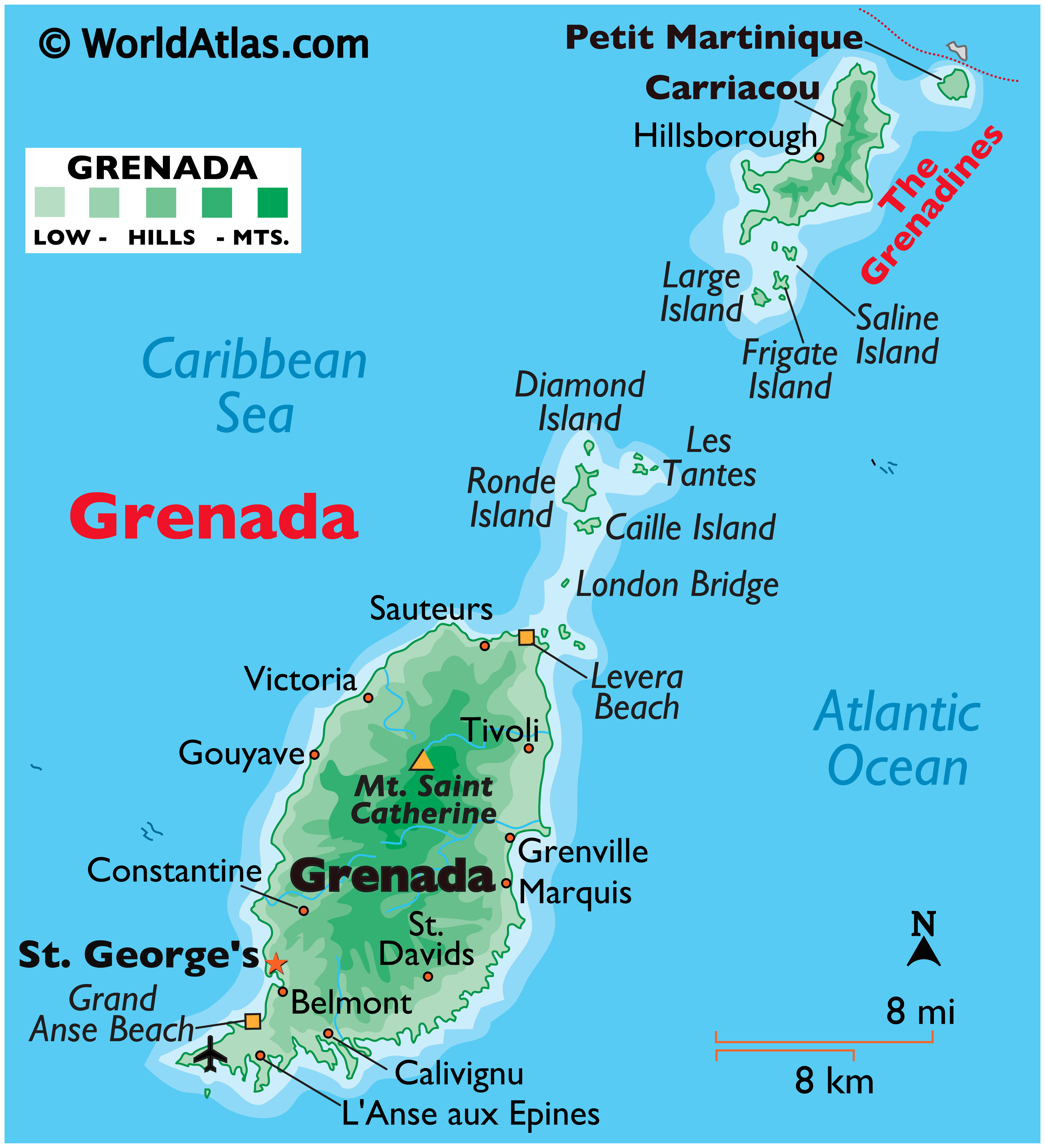

.gif)
